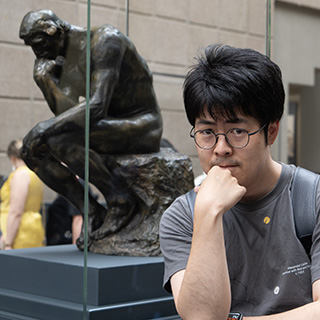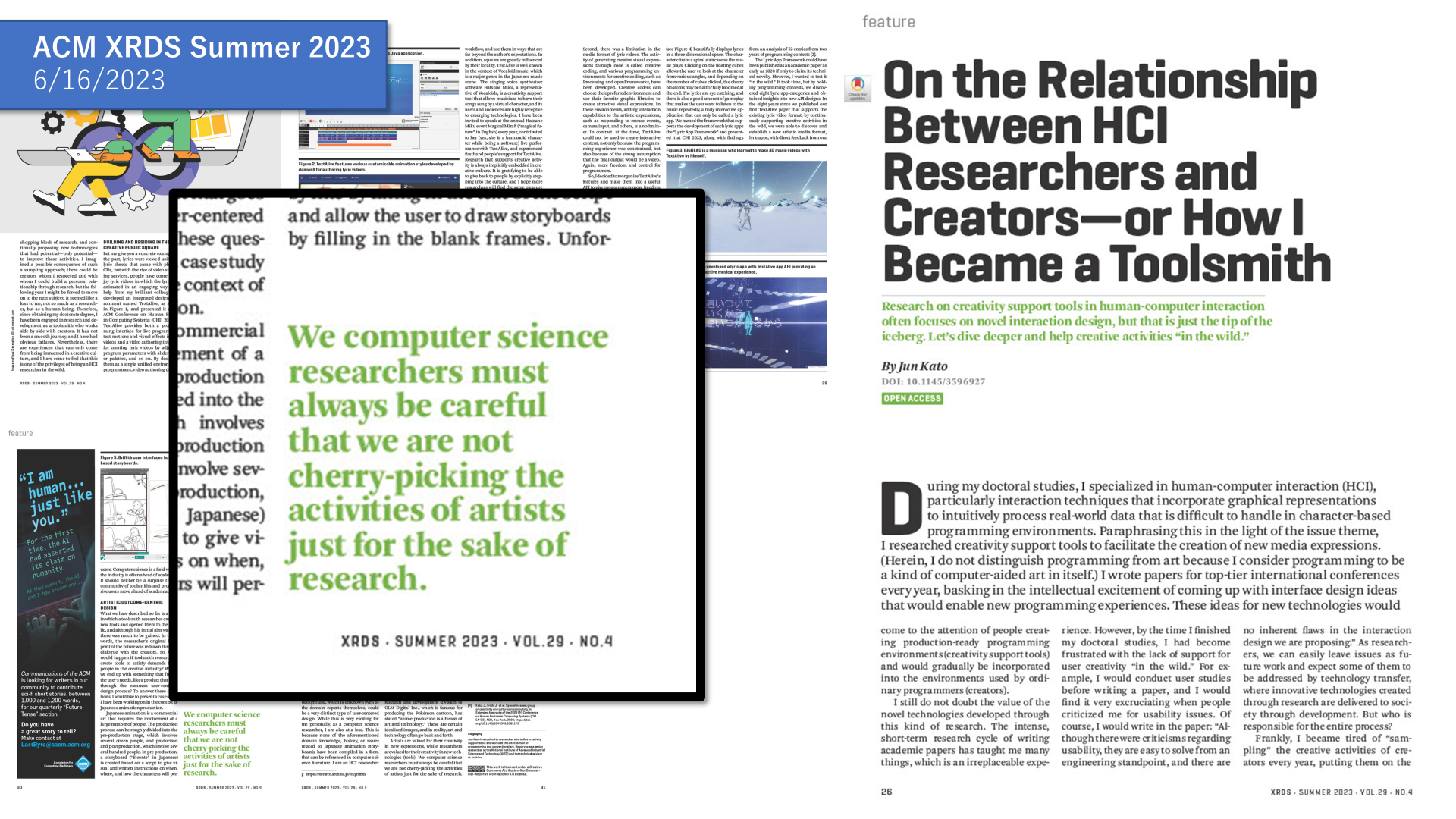On the relationship between HCI researchers and creators
The Summer 2023 issue of ACM XRDS (Crossroads), The ACM Magazine for Students, is dedicated to "Exploring the Horizon of Computation for Creativity." I contributed an article that discusses the role of computer scientists in helping creative and cultural activities "in the wild."
The Human-Computer Interaction field has a long history of working on creativity support tools. Despite its academic value (I do believe in it), its significant focus on technical novelty is sometimes questioned, as the novel tools are often evaluated in controlled lab settings.
At CHI 2023, we held a special interest group on creativity and cultures in computing (SIGCCC) to sort out these kinds of limitations and discuss how we can tackle them to "understand and support open-ended, culturally embedded, collaborative creativity." The list of subgroups in the SIGCCC built in response to the pre-SIG questionnaire was already interesting:
- From Big-C to mini-c: everyday creativity for well-being
- End-user development, malleable software, and socio-technical programming environments
- Fan community, online worlds, and social creativity
- Culture biases and WEIRDness
- Human-AI co-creativity and agency
My XRDS article touches on these issues by introducing my experience helping musicians, programmers, and anime directors. It highlights two case studies: TextAlive, developing an AI-enabled environment for authoring and distributing lyric videos and lyric apps, and Griffith, developing a storyboarding tool.
As cited in the figure, we "must always be careful that we are not cherry-picking the activities of artists just for the sake of research." We can and should value the cultural context on top of rich history. The article is open access in the ACM Digital Library. Enjoy!
 Top page
Top page